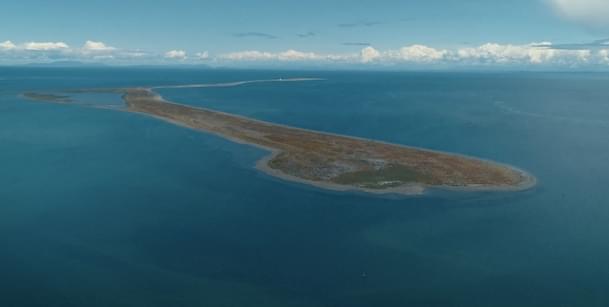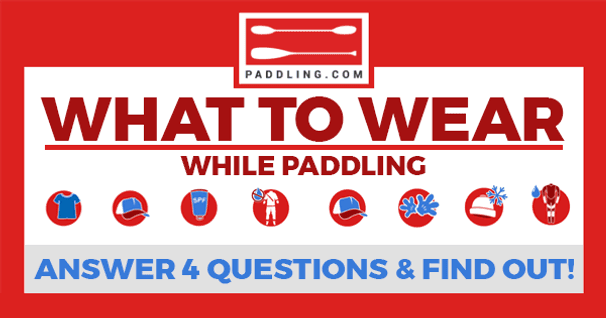What Kayakers Can Learn From the New York Ferry Collision
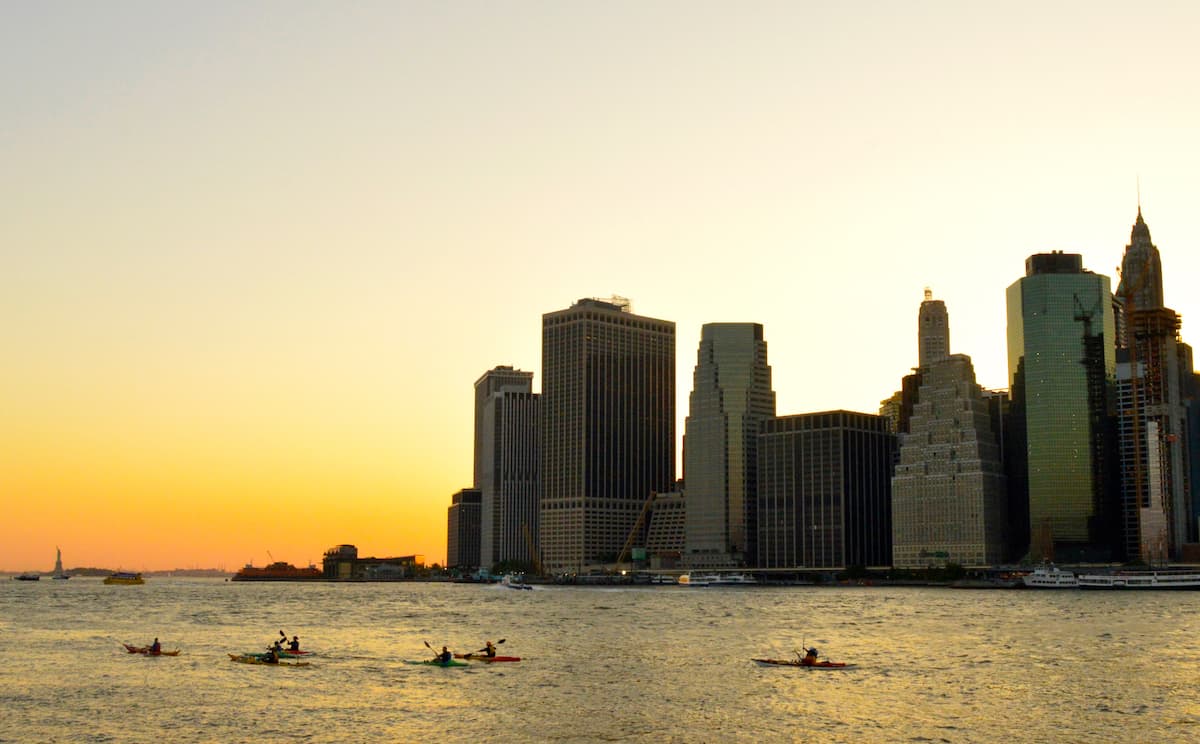
New York City is an extraordinary place to paddle. The Hudson waterfront on the west side of Manhattan boasts unparalleled views of the Statue of Liberty and the world’s most famous skyline, but like any busy urban waterway, paddling there is not without its challenges.
Ferries criss cross the river day and night, and all manner of craft ply the waterfront, from barges and cruise liners to pleasure boats under power and sail. Add rebounding boat wakes and powerful tidal currents to that mix, and it’s remarkable that kayakers in New York have been involved in only one serious collision with a commercial vessel in recent years. But it was a memorable one.
During an August rush hour in 2016, the NY Waterways ferry Jersey City collided with a group of 10 paddlers, knocking several from their kayaks and injuring three people, including veteran Manhattan Kayak Company (MKC) guide Jay Cartagena and an 18-year-old man who suffered deep lacerations to his left arm.
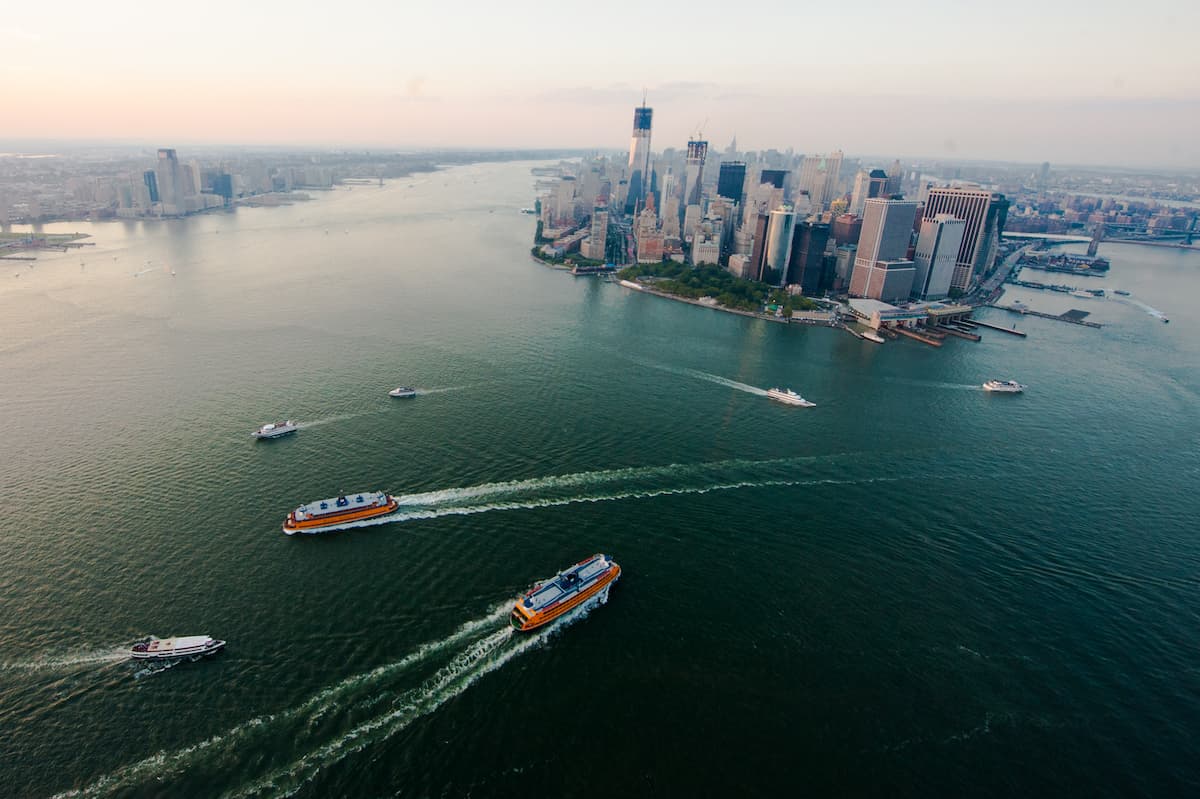
The accident occurred just before 6 p.m. near the West Midtown Ferry Terminal at Pier 79, with video of the ensuing rescue aired on local news channels. In a news conference that evening, the commander of the New York Police Department’s Harbor Unit announced that the young man’s arm had been “partially severed.” That detail led all the news coverage, and though the injuries were not as severe as initially described, the accident illustrated the hazards of paddling in busy commercial waterways.
A Coast Guard investigation focused on two primary causes: a lack of communication between the kayak and ferry companies, and sun glare that prevented the ferry captain from seeing the group of eight kayaks in his path. Due to the intense glare, the ferry captain relied on his radar to make sure there was no traffic in his path. Kayaks, of course, do not appear on radar.
Rather than slowing or posting a lookout, however, the captain accelerated into the glare. Within a minute of leaving the dock he was making 22 knots and heading straight for the kayakers. The guide, Cartagena, shouted and waved his paddle. It was no use. At that time of day, in those conditions, he and the other kayakers were all but invisible to the ferry operator.

Cartagena watched in disbelief as the ferry collided with a double kayak carrying two experienced paddlers, including the man whose left arm was badly lacerated. Then the ferry struck him as well. “I think part of the reason why I got hit was because I couldn't get myself out of the way because I was just so much in shock about what just had happened,” Cartagena later told investigators with the Coast Guard and National Transportation Safety Board. He suffered a dislocated shoulder, broken rib and punctured lung, as well as lacerations on his hand and neck. His first thought was getting back into his boat to assist the others. Cartagena and MKC owner Eric Stiller did not reply to requests for comment, and NYC ferries declined to comment on the incident, which was the subject of a lawsuit.
The clients were using sit-on-top kayaks—five singles and two doubles—but Cartagena was paddling a 14-foot sit-inside. The impact blew off the rear hatch cover and left the boat completely swamped. Then, as he tried to pull himself aboard, Cartagena realized his shoulder was dislocated. Floating in the Hudson, the ACA-certified guide did his best to make a head count and organize the paddlers as the ferry rendered assistance.
Deckhands lowered a rope ladder over the side, while the ferry captain contacted the Coast Guard and 911. Another employee simultaneously contacted the NYPD Harbor Patrol by cell phone. The emergency response was swift and well coordinated. A news helicopter filmed the scene.
The most seriously injured kayaker, the young man with the lacerated arm, was reportedly slipping in and out of consciousness. Another kayaker used his shirt to fashion a makeshift tourniquet. The boaters helped the young man onto a kayak, and he was transferred to the NYPD patrol boat and rushed to the hospital.
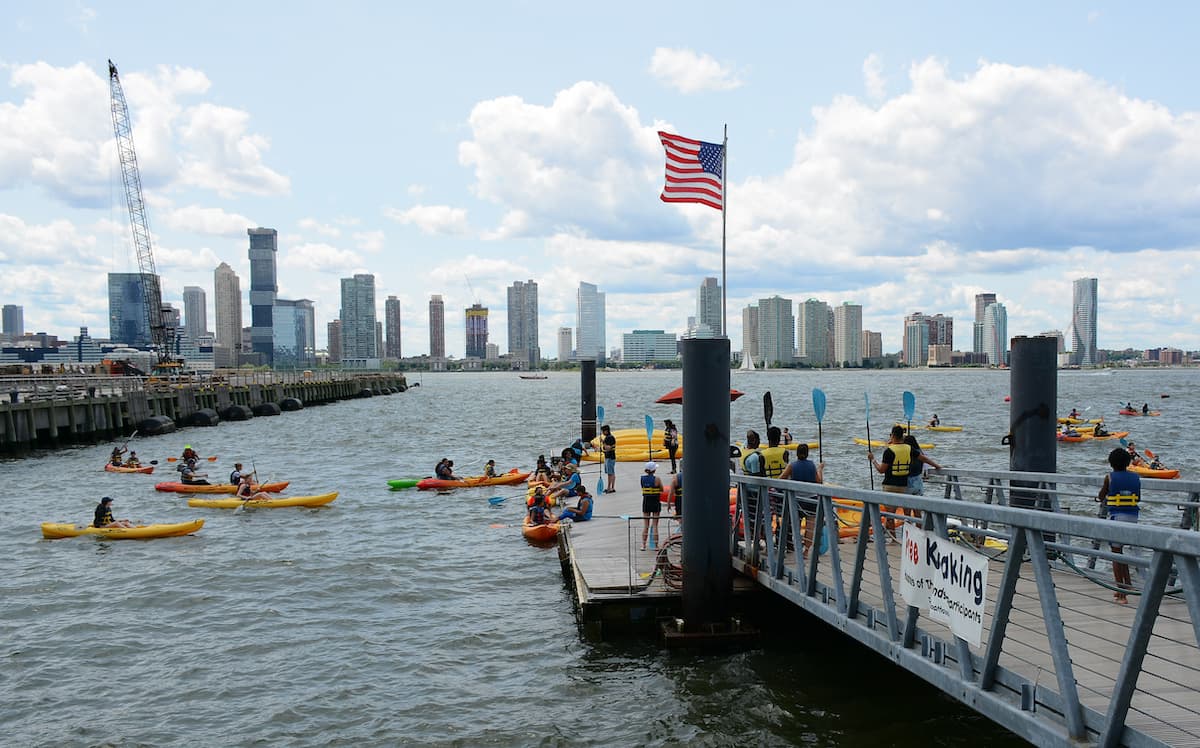
Cartagena told investigators he never thought such an accident would happen, especially since he felt the kayak company and ferry operators had established a good working relationship. At the time of the accident, MKC had been based for three years at Pier 84, just five blocks north of the ferry terminal. Cartagena estimated that he had led at least 200 kayak and standup paddleboarding tours from the location, at least half of which crossed in front of the Midtown Ferry Terminal.
Yet in all that time working in close proximity, the two companies had never organized a formal line of communication. (MKC and NY Waterways did work together to produce a safety video in 2011.) Moreover, while every ferry captain knows that kayaks are common in the area, MKC’s kayak tours don’t operate on a regular route or schedule. Due to the Hudson’s powerful tidal currents, every outing has to be timed with the tides, and even the choice of whether to go north or south from the boathouse at Pier 84 can be a game-time decision.
As a result, there was no formal mechanism in place to alert ferry operators that kayaks were in the area. Cartagena didn’t announce on VHF Channel 13 that his group of kayaks was crossing in front of the ferry terminal. In fact, he didn’t have a radio or air horn with him at the time of the accident. That, combined with the blinding glare and the ferry captain’s failure to post a lookout and proceed at a prudent speed for the conditions, was a recipe for disaster.
The aftermath of the 2016 ferry incident brought plenty of finger-pointing and a lawsuit that was settled out of court. It also prompted some soul-searching within the vibrant New York City kayaking community. The paddling scene in New York is centered around a dozen nonprofit clubs like the Downtown Boathouse on the Lower West Side and the Brooklyn Bridge Park Boathouse in Brooklyn. After the accident, all the clubs and commercial outfitters including MKC came together to review best practices for paddling New York’s wild and wonderful waterways.
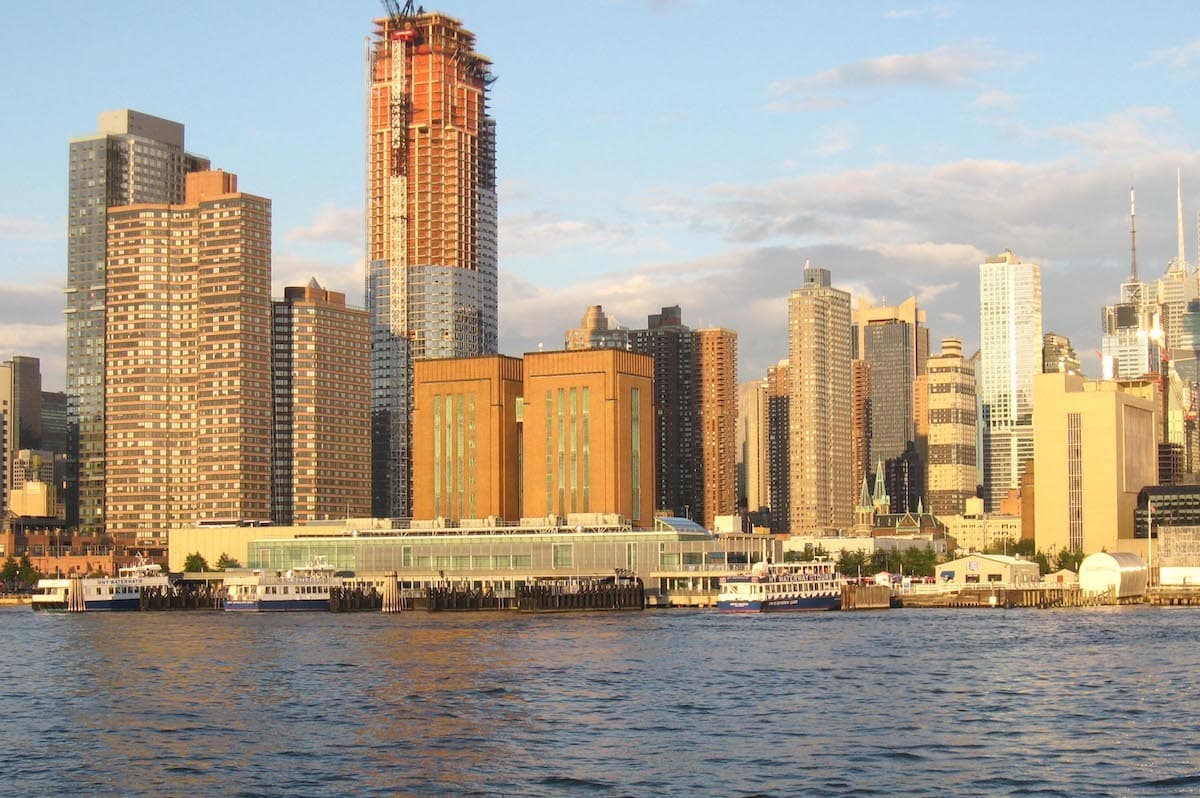
Avoid the chokepoints
The key to accident avoidance, says Downtown Boathouse President Graeme Birchall, is just that—avoidance. While the waters around New York are some of the busiest in America, Birchall contends that kayaking in the city is still safer than riding a bicycle on Sixth Avenue. “The harbor is bigger than Manhattan, and it’s much more open, with much better visibility,” says Birchall, whose nonprofit has organized nearly half a million free kayak outings in the last two decades without a major incident. The problem is chokepoints such as ferry terminals, where paddlers come into contact with heavy marine traffic.
The first lesson if you’re paddling in New York City or any other crowded waterway, is to avoid those chokepoints. Paddlers at the Downtown Boathouse rarely leave the embayment at West 26th street, an area about half a mile square with no regular commercial traffic, Birchall says. To use the cycling analogy, these quiet corners of the Hudson are like side streets, and the shipping channels are like highways.
Nobody wants to cross the interstate on a bicycle. So stay well clear of the shipping channels. If you must cross them, do so at a 90-degree angle when there’s a clear break in traffic, and—this is important—when you can be confident that other vessels can see you clearly and from sufficient distance.
Make yourself visible—and then assume you're not
The ferry operator didn’t see the kayakers until seconds before the collision, even though they were in brightly colored kayaks on a clear sunny day. From the perspective of the ferry captain looking west toward the late-afternoon sun, the kayaks appeared as tiny silhouettes against the bright glare. This is one of the most important lessons from the accident: Just because you can see other boats doesn’t mean they can see you.
Just as motorcyclists need to be hyper-aware of other motorist’s blind spots, kayakers, canoeists and standup paddle boarders should pay special attention to how they appear to other boaters. Factors like sun, fog, and even wave action can make kayaks harder to see. The best strategy is to wear bright colors and do everything you can to make yourself visible, and then paddle as if you’re not.
Make your intentions clear
In the safety video that MKC and the ferry company worked together on, NY Waterways ferry captain Richard Thornton makes a point of saying how helpful a simple wave from a kayaker can be. “If they can make some sort of visual signal like a hand-wave, it’s greatly appreciated on our part,” he says. Eye contact, or a paddle held aloft to indicate you’re waiting for the other vessel to pass, can help avoid confusion on the water.
Go with a pro
In New York City, even experienced kayakers should consider paddling with local clubs or outfitters. The city sees about 100,000 kayak outings a year, the vast majority of which are organized through a dozen community boathouses and licensed outfitters. Paddling in a group led by experienced paddlers who know the chokepoints and traffic patterns is the best way to safely enjoy urban waterways such as Chicago, San Diego and of course the Big Apple. And unlike so many things in New York, club paddling is neither exclusive nor expensive. Many local clubs welcome visiting paddlers for free.
Avoid rush hour traffic
Paddlers also should pay close attention to the time of day, Birchall says. In New York, ferry traffic is much heavier during the morning and evening rush hours, which frequently coincide with low-angle sun that compromises visibility. All of these factors came into play in the August 2016 ferry collision.
Carry a VHF radio
Commercial vessels regularly announce their movements on VHF Channel 13, and monitor this “traffic channel” at all times. In New York City, many kayak tour guides and recreational paddlers carry handheld VHF radios and announce themselves when crossing in front of ferry terminals and other high-traffic areas. Think of it as a more polite version of the Big Apple crosswalk mantra, “Hey, I’m walkin’ here!” made famous by Dustin Hoffman’s character in Midnight Cowboy.
This was a key finding of the Coast Guard’s investigation of the 2016 accident. The report concluded that the ferry captain was travelling at an unsafe speed for the conditions and failed to post a proper lookout. But investigators also noted that a radio call from the kayak guide before the group passed the ferry terminal might have caused the captain to proceed more cautiously.
Immediately after the accident, MKC owner Eric Stiller told investigators the company bought three more handheld VHF radios and guides began using them on all outings. The first time he led a group out of the embayment after the incident, Stiller made a call on Channel 13 to alert commercial traffic. “I immediately got two responses from two ferries,” he said. “They copied us right away.”
Related Articles
The true story and life-saving lessons of Adam Irino’s very strange day. August 31, 2019 was shaping up…
Dungeness Spit from above, with the New Dungeness Lighthouse in the distance Dungeness…
Wondering what to wear when going paddling? Answer 4 quick questions and instantly learn what you need…


